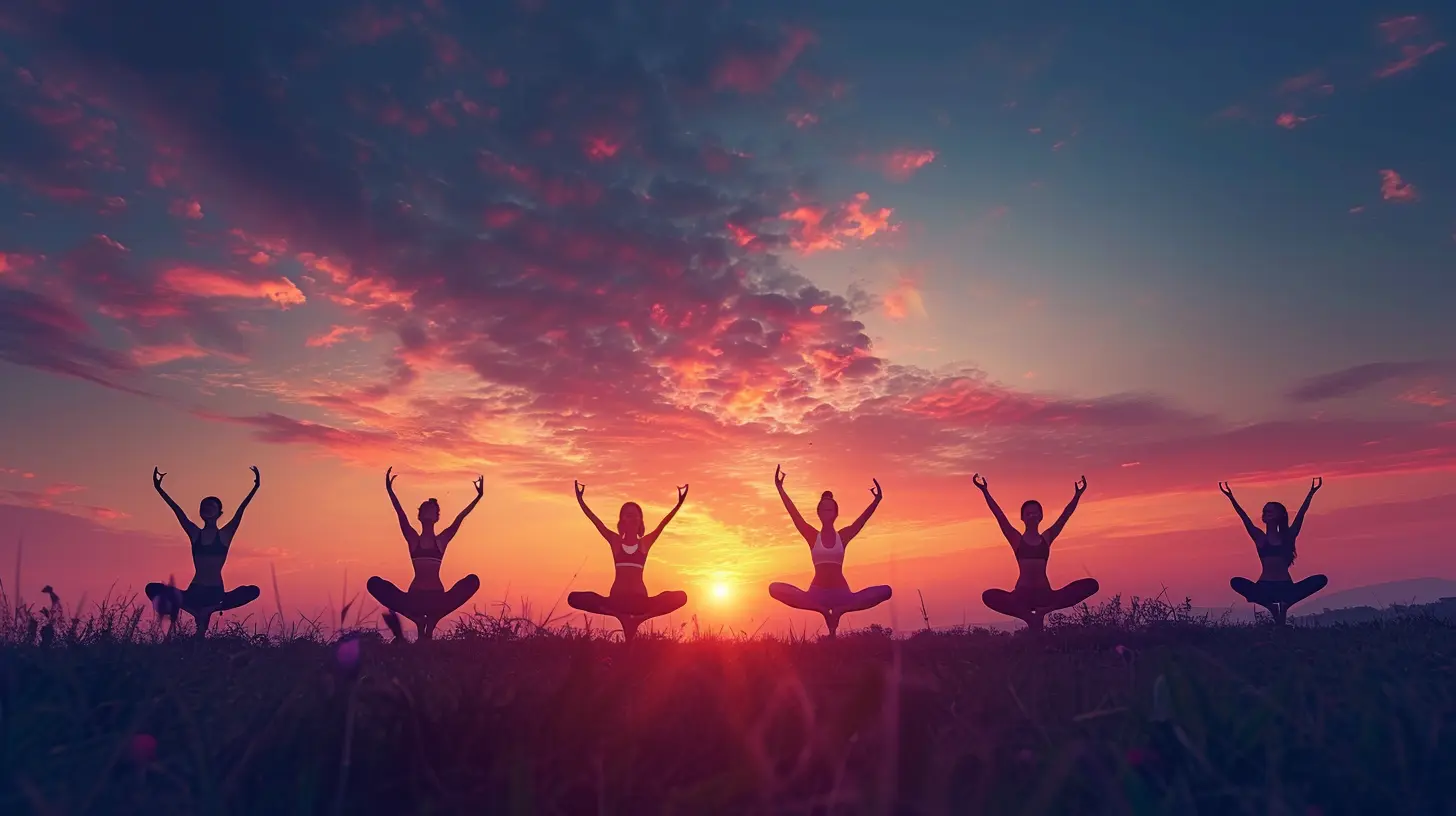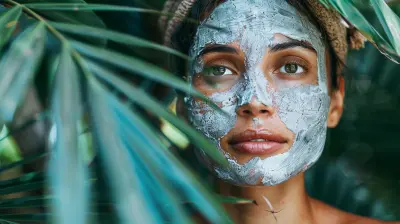Adapting Yoga for Different Body Types: Embracing Individuality
21 November 2025
Yoga is for everybody and every body. Yet, step into a typical yoga class, and you might notice a disconnect—poses that seem tailored for one body type but feel awkward or even unattainable for another. The truth? Yoga isn’t one-size-fits-all. Adapting yoga for different body types means honoring our individuality and ensuring that the practice is inclusive, accessible, and beneficial for all.
So, how can we tailor yoga to different body types while still reaping its many benefits? Let’s dive in.
Understanding Individual Body Types in Yoga
Each of us has a unique structure, flexibility, and range of motion. Some yogis are naturally flexible, while others struggle with tight hamstrings or limited mobility. Some have larger bodies that require adjustments, while others have smaller frames needing more stability.Here’s why that matters: forcing a body into generalized yoga postures can lead to discomfort—or worse, injury. Instead of viewing yoga as a rigid practice, we should see it as fluid and adaptable, just like our bodies.
Body Types and Their Yoga Needs
Though body types are highly individualized, we can categorize common needs:- Curvy or Plus-Size Bodies: May need modifications for balance, space, and comfort.
- Tall and Lean Bodies: Might struggle with stability and grounding.
- Petite or Short Bodies: Often need adjustments for alignment and engagement.
- Athletic or Muscular Bodies: May have tight muscles that limit flexibility.
- Hypermobile or Extremely Flexible Bodies: Need to focus more on strength and stability than deep stretches.
Let’s break these down further and look at how you can adapt yoga to fit your unique body, rather than the other way around.
Yoga Modifications for Different Body Types
1. Yoga for Curvy and Plus-Size Bodies
If you have a fuller figure, you might find that some poses feel crowded or difficult to balance. The good news? Small tweaks can make a huge difference.💡 Tips for Practice:
- Use Props: Blocks, straps, and bolsters are your best friends! They help bring the ground closer and create space.
- Open Up Your Stance: Widening the legs in poses like Forward Fold or Downward Dog prevents compression.
- Modify Twists: Instead of forcing yourself into a deep spinal twist, use a chair or take a more upright variation.
- Mind the Breathing Space: Adjust arm positions in poses like Child’s Pose to allow more room for the chest and belly.
🧘♀️ Best Poses: Supported Warrior II, Seated Forward Fold with a strap, Reclined Butterfly Pose.
2. Yoga for Tall and Lean Bodies
Tall yogis often deal with balance challenges and may feel like they’re folding themselves into awkward positions. Long limbs require extra stability and mindfulness.💡 Tips for Practice:
- Be Mindful of Balance: A wider stance in standing poses (like Warrior I) can help with steadiness.
- Engage Core Strength: This counters any tendency to collapse into poses.
- Use Props for Support: Blocks under hands in poses like Triangle Pose or Half Moon can prevent excessive bending.
🧘♂️ Best Poses: Tree Pose (for balance), Extended Triangle with a block, Bridge Pose.
3. Yoga for Petite or Short Bodies
If you have a smaller frame, you may sometimes feel like there’s too much space between you and the ground. Adjusting the distance between hands and feet can help.💡 Tips for Practice:
- Shorten Your Stance: Poses like Downward Dog or Warrior Poses might feel better with a closer foot placement.
- Use Props Sparingly: Blocks may not always be necessary, but when used strategically, they can enhance alignment.
- Focus on Strengthening Poses: Building strength in the core and legs helps create stability.
🧘 Best Poses: Warrior I (with a narrower stance), Low Lunge, Seated Twists.
4. Yoga for Athletic or Muscular Bodies
Athletes and those with well-developed muscles may struggle with flexibility in certain poses. Tight hamstrings, shoulders, and hips can make deep stretches a challenge.💡 Tips for Practice:
- Incorporate Dynamic Movements: Flow-based sequences help increase mobility.
- Focus on Breathwork: Slow, deep breaths encourage muscles to relax.
- Use Straps for Flexibility: In poses like Seated Forward Fold, a strap allows a deeper stretch without strain.
🧘♂️ Best Poses: Pigeon Pose (for hip mobility), Cat-Cow (for spinal flexibility), Reclined Twist.
5. Yoga for Hypermobile Bodies
Some yogis have the opposite issue—too much flexibility. While this might sound like a blessing, extreme flexibility without strength can lead to joint instability.💡 Tips for Practice:
- Prioritize Strength Over Flexibility: Engage muscle groups in each pose rather than relying on flexibility alone.
- Limit Overextension: Avoid pushing too far into splits or backbends.
- Use Resistance: Try resistance bands to build joint stability.
🧘♀️ Best Poses: Plank (for core strength), Chair Pose (to activate stability), Supported Bridge (for spine safety).
The Role of Props in Adaptive Yoga
Yoga props aren’t just for beginners—they’re essential for adapting poses to different body types.✔ Blocks: Help shorten the distance to the floor, making poses like Triangle or Half Moon more accessible.
✔ Straps: Assist with flexibility in poses like Seated Forward Fold.
✔ Bolsters: Provide comfort in restorative poses, important for curvier bodies or those with joint discomfort.
✔ Chairs: Great for seated modifications, especially for those with limited mobility.
Strengthening the Mind-Body Connection
Regardless of body type, yoga is about the connection between movement, breath, and awareness. Instead of focusing purely on physical shape, ask yourself:- How does this pose feel in my body?
- Am I forcing myself into a shape that doesn’t serve me?
- Can I modify this posture to make it feel more natural?
This shift in mindset transforms yoga from an exercise practice into a deeply personal and fulfilling journey.
Encouraging a Body-Positive Approach to Yoga
It’s time to ditch the comparison game. Yoga isn’t about who can touch their toes or balance in a handstand—it’s about self-acceptance and progress.🔥 Reminders for Every Yogi:
- Your body is unique, and that’s a good thing.
- Modifications aren’t "cheating"—they’re tools for empowerment.
- Strength, flexibility, and mindfulness look different for everyone.
The next time you unroll your mat, embrace the practice on your terms. Honor your body, respect its needs, and adapt yoga to fit YOU—not the other way around.
Final Thoughts
Yoga should feel accessible, comfortable, and empowering, no matter your body type. By making thoughtful modifications and using proper support, you can enjoy all the benefits of yoga without pain or frustration.So, whether you're tall, petite, curvy, flexible, or somewhere in between—yoga is for you. Keep practicing, keep adapting, and, most importantly, keep honoring your one-of-a-kind body.
all images in this post were generated using AI tools
Category:
YogaAuthor:

Madeline Howard
Discussion
rate this article
1 comments
Finn McNeil
Yoga isn’t one-size-fits-all—embracing our unique bodies enhances practice, fosters joy, and deepens the connection between mind and movement.
November 21, 2025 at 6:00 PM


